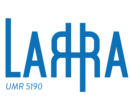Scope note for the class A22_Period Back
Candidate
Scope note
- Text
rdfs:comment "\"E4 Period
Subclass of: E2 Temporal Entity
Subclass of E92 Spacetime volume
Superclass of: E5 Event
Scope note: This class comprises sets of coherent phenomena or cultural manifestations occurring in time and space.
It is the social or physical coherence of these phenomena that identify an instance of E4 Period and not the associated spatiotemporal extent. This extent is only the “ground” or space in an abstract physical sense that the actual process of growth, spread and retreat has covered. Consequently, different periods can overlap and coexist in time and space, such as when a nomadic culture exists in the same area and time as a sedentary culture. This also means that overlapping land use rights, common among first nations, amounts to overlapping periods."
rdfs:comment "Nous reprenons la défintion du cidoc-CRM 7.0 : voir : http://cidoc-crm.org/sites/default/files/CIDOC%20CRM_v.7.0_%2020-6-2020.pdf
This class comprises distinct, dlimited and coherent processes and interactions of a material nature, in cultural, social or physical systems, involving and affecting instances of E77 Persistent Item in a way
characteristic of the kind of process.
Typical examples are meetings, births, deaths, actions of decision
taking, making or inventing things, but also more complex and extended ones such as conferences,
elections, building of a castle, or battles.
While the continuous growth of a tree lacks the limits characteristic of an event, its germination from a
seed does qualify as an event. Similarly the blowing of the wind lacks the distinctness and limits of an
event, but a hurricane, flood or earthquake would qualify as an event. Mental processes are considered as
events, in cases where they are connected with the material externalization of their results; for example
the creation of a poem, a performance or a change of intention that becomes obvious from subsequent
actions or declarations.
The effects of an instance of E5 Event may not lead to relevant permanent changes of properties or
relations of the items involved in it, for example an unrecorded performances. Of course, in order to be
documented, some kind of evidence for an event must exist, be it witnesses, traces or products of the
event.
While instances of E4 Period always require some form of coherence between its constituent phenomena,
in addition, the essential constituents of instances of E5 Event should contribute to an overall effect; for
example the statements made during a meeting and the listening of the audience.
Viewed at a coarse level of detail, an instance of E5 Event may appear as if it had an ‘instantaneous’
overall effect, but any process or interaction of material nature in reality have an extent in time and space.
At a fine level, instances of E5 Event may be analyzed into component phenomena and phases within a
space and timeframe, and as such can be seen as a period, regardless of the size of the phenomena. The
reverse is not necessarily the case: not all instances of E4 Period give rise to a noteworthy overall effect
and are thus not instances of E5 Event."
- Language
- en




Comments
No comment found.